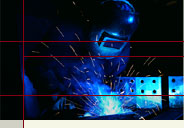
We are currently creating content for this section. In order to be able to keep up with our high standards of service, we need a little more time. Please stop by again. Thank you for your interest!
There are five different ways I know of to test an fuel injector while it is still in the engine. Bench testing an injector for flow is not covered in this article Each way has its advantages and disadvantages, but none is clearly superior in troubleshooting. Injectors can go bad gradually, not necessarily all at once. So an injector in an early state of failure may test a "little" out of range on the Ohm and ECU harness test, sound different but still be clicking on the stethoscope and CAS test, and give intermittent changes in idle during the power balance test. In other words, the test results are not always black and white.
Because of this, I recommend you verify a bad injector with at least two, if not three different tests before going to the trouble and expense of replacing it. The ways to test an injector in the engine include:
- Stethoscope or screwdriver test
- CAS test
- Ohm test
- Power balance test
- ECU harness test

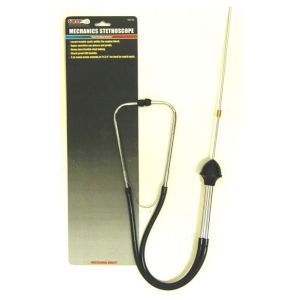 A mechanic's stethoscope is a nice tool to have around. They cost about ten bucks. For purposes of diagnosing a faulty fuel injector, a long slotted screwdriver does the trick. Exactly where you contact the injector is not as important as making sure you touch each injector in the same spot. Experiment on one injector and notice the way the clicking changes when you move the tip of the stethoscope on the top of the same injector. Once you find your favorite little cranny, do it the same way on each injector. A mechanic's stethoscope is a nice tool to have around. They cost about ten bucks. For purposes of diagnosing a faulty fuel injector, a long slotted screwdriver does the trick. Exactly where you contact the injector is not as important as making sure you touch each injector in the same spot. Experiment on one injector and notice the way the clicking changes when you move the tip of the stethoscope on the top of the same injector. Once you find your favorite little cranny, do it the same way on each injector.
This test requires leaning over the engine while it is running in some fairly awkward positions. Don't get bit by a fan or belt. Watch out for loose clothing, long hair.
No clicking sound means a bad injector. But often the results are more quantitative. Listen for a muffled click, or if one injector sounds different than the rest, then that injector is suspect.

This is a version of the above test but done without the engine running. The injectors will run with the ignition switch in the ON position. Taking the engine noise out of the picture makes life a bit easier, but the crank angle sensor (CAS) has to be removed for this test, making it a little more cumbersome.
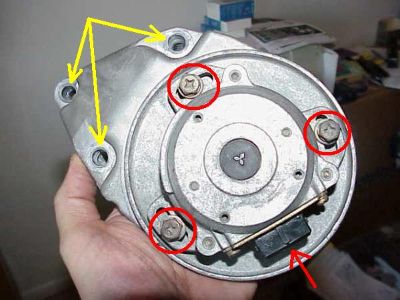 Remove the CAS from the engine by removing the three bolts at the yellow arrows. Keep the engine harness connected to the CAS at the red arrow. Turn ignition switch on but do NOT start engine. Rotate the CAS sensor shaft by hand. Each healthy injector should make a definite clicking sound. You may need to run around and perform the screwdriver test on each injector while a helper turns the CAS shaft by hand. Interpretation is the same as the stethoscope or screwdriver test above. An injector that does not click, or sounds different from the rest is bad. The main advantage the CAS test has over the Screwdriver test is that the engine is not running, which makes the test safer and quieter. Remove the CAS from the engine by removing the three bolts at the yellow arrows. Keep the engine harness connected to the CAS at the red arrow. Turn ignition switch on but do NOT start engine. Rotate the CAS sensor shaft by hand. Each healthy injector should make a definite clicking sound. You may need to run around and perform the screwdriver test on each injector while a helper turns the CAS shaft by hand. Interpretation is the same as the stethoscope or screwdriver test above. An injector that does not click, or sounds different from the rest is bad. The main advantage the CAS test has over the Screwdriver test is that the engine is not running, which makes the test safer and quieter.

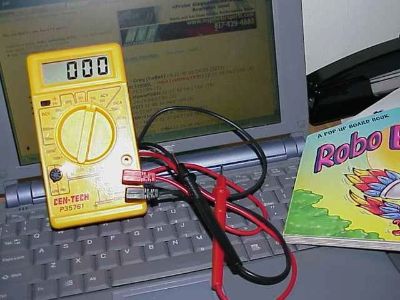 Harbor Freight regularly has sales on these multimeters for under ten bucks. Or you can spend more than $200 for a quality Fluke multimeter. Harbor Freight regularly has sales on these multimeters for under ten bucks. Or you can spend more than $200 for a quality Fluke multimeter.
The cheap model shown here has done everything I've asked from it when it comes to diagnosing Z problems. The normal range for a working injector is 10-14 ohms. You test the injectors by disconnecting the harness clips, and touching the leads on each injector with the ignition off.

The power balance test isolates a problem cylinder, and involves pulling one coil pack connector at a time with the engine warm and idling. The normal response is to hear a noticeable drop in the RPM's as the car runs on five cylinders instead of six. No change in the engine sound when the coil pack connector is pulled indicates some sort of problem with that corresponding cylinder. A bad fuel injector is a common culprit. So are corroded and cracked harness connectors, bad coil packs, bad spark plugs, bad compression, just about anything that would cause a cylinder to not "share the load."

This is essentially the same idea as the ohm test except the test is performed on the pins at the ECU harness instead directly at the injector. I use this test the least, well, never, lol. This test does allow quick testing fo all the injectors from one spot, namely at the ECU harness connector under the passenger floorboard. I don't like counting the tiny pins and sockets and the ECU connector. If a bad injector is found through this method, the individual injector will still have to be tested under the hood to eliminate the harness wiring (rare) or injector connector (not-so-rare) as the problem.
<diagram of ECU harness connector>

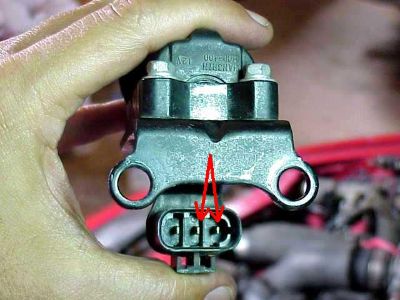 If you've tested all your injectors and they seem to be fine, it's worth checking the coil packs (among many other things). Not getting spark in a cylinder would make the engine run rough in the same way as a bad injector. Either way, the car would be chugging or runnning rough, idling rough, and have loss of power. Pulling the spark plugs can also yield some helpful information. Run the car for a minute first. Right off the bat, if the spark plug is wet with fuel, then at least you know the injector is spraying in that cylinder but the spark plug is probably not firing and burning up the air fuel mixture. If you've tested all your injectors and they seem to be fine, it's worth checking the coil packs (among many other things). Not getting spark in a cylinder would make the engine run rough in the same way as a bad injector. Either way, the car would be chugging or runnning rough, idling rough, and have loss of power. Pulling the spark plugs can also yield some helpful information. Run the car for a minute first. Right off the bat, if the spark plug is wet with fuel, then at least you know the injector is spraying in that cylinder but the spark plug is probably not firing and burning up the air fuel mixture.
Before pulling the spark plugs, coil packs are easy to test in the car. Each cylinder has a coil pack, so there are six. Admittedly, coil packs don't crap out nearly as often as fuel injectors, but I've had one go bad in my car. An out of range coil pack will not provide spark to the corresponding cylinder. The coil packs can be tested in the car, with the ignition off. The normal range for a good coil pack is 0.7-1.6 ohms, in other words, very low. The official number in the FSM is 0.7 ohms, but adding the internal resistance of the multimeter (touch the multimeter leads together to get internal resistance reading) yielded 1.3-1.4 ohms for all my working coil packs.
| 